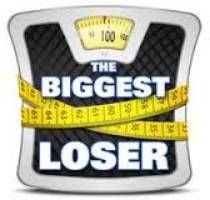Summary
Students use data about a weight loss competition to compare different ways of measuring change and analyze the benefits and shortcomings of each method.
Essential Question(s)
How can we measure and compare changes?
Snapshot
Engage
Students consider three alternative methods for measuring change and are asked to evaluate which method of measuring change is the "best."
Explore
Students create formulas to use for the three methods of measuring change and identify the quantities that would be needed to compute each measurement.
Explain
Students explain different situations in which a change has occurred and which methods of measuring change are most appropriate for each situation
Extend
Students apply the three different methods of measuring change do a data set from a "Biggest Loser" type contest to determine who would win the contest.
Evaluate
Students create a situation in which the three models of measuring change would result in different determinations of most or least change and construct a 2-minute paper about which method of measurement they feel should be used and why.
Materials
Biggest Loser Four Corner signs (attached)
Lesson Slides (attached)
Biggest Loser handout (attached)
Scientific or graphing calculators
Engage
Before class, post the Four Corner signs in the corners of the room. Show the attached PowerPoint slide. Ask students to write down what they notice and wonder about this situation. Record their notices and wonders and display them in the classroom.
Explore
Divide the class into six groups. Assign two groups to each of the three people listed on slide 1: Andrew, Bao, and Ciara. The task of each group is to create a formula their person would use to measure their progress (and their friends' progress). Tell students to be careful to identify all of the quantities they will need in their formula.
Explain
After each group creates a formula, have the two groups working on Andrew's method present their solution. As a whole class, compare and contrast the results of the two groups until a consensus is reached about the proper formula. Repeat this process with the groups working on Bao and Ciara.
Explain to the class that you will be completing a variation of a Four Corners activity. Direct their attention to the four signs you have posted around the room. Tell students that you will be displaying a situation on the board. Their job is to decide which of the methods of measurements is appropriate for the given situation: Andrew's total change, Bao's percent change, or Ciara's percent of goal obtained. Students should move to the corner of the room that represents the measurement they find most appropriate for the situation.
Click to slide 2. Ask one student from each corner to explain their reasoning for choosing that measurement (or those measurements). For the corner marked "Two or More," after the first student chosen explains their reasoning, ask the other students in the group if they had picked different measurements. If so, have them explain their reasoning as well.
Repeat this process for slides 3–8.
Extend
Tell students they are going to take a closer look at situation five. Pass out the attached Biggest Loser handout and let students work in pairs to complete the handout.
After students complete the handout, have a discussion with the students about what they found. Some questions you might ask students include:
Did the same person always win?
Did changing how often we measured their progress change the results?
Were you surprised by any results?
Which person do you think should win? Why?
Evaluate
Tell students that they will be given 5 minutes to respond to two prompts. They do not need to write in complete sentences; they may use symbols and pictures to help respond to the prompt, but they must make their meaning clear. Then, forward to the slide 9 and give students 5 minutes to respond to this prompt.
Resources
K20 Center. (n.d.). Four Corners. Strategies. https://learn.k20center.ou.edu/strategy/d9908066f654727934df7bf4f5064550
Biggest Loser. Trademark 2001-2016, NBC Comcast Universal.


